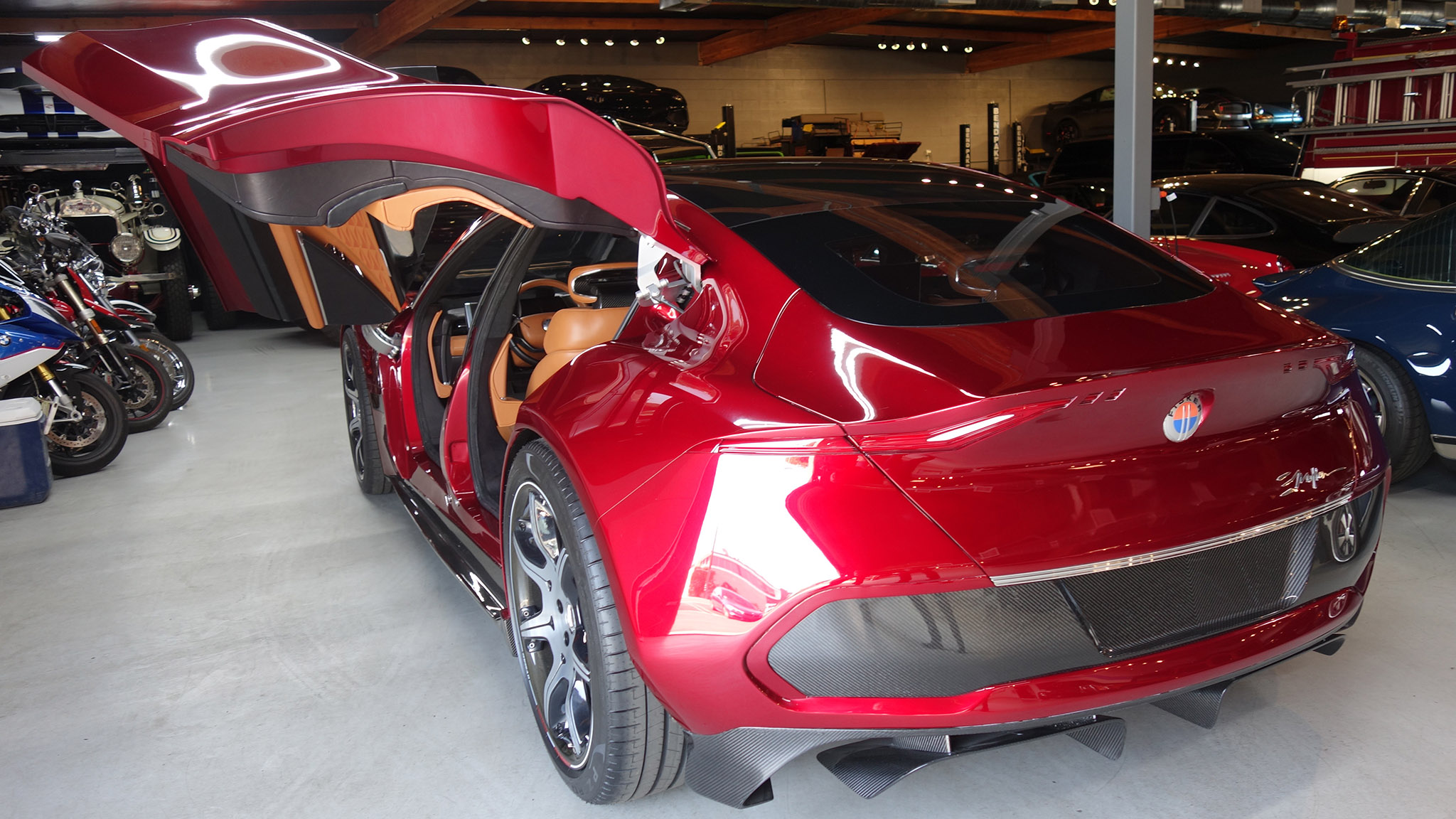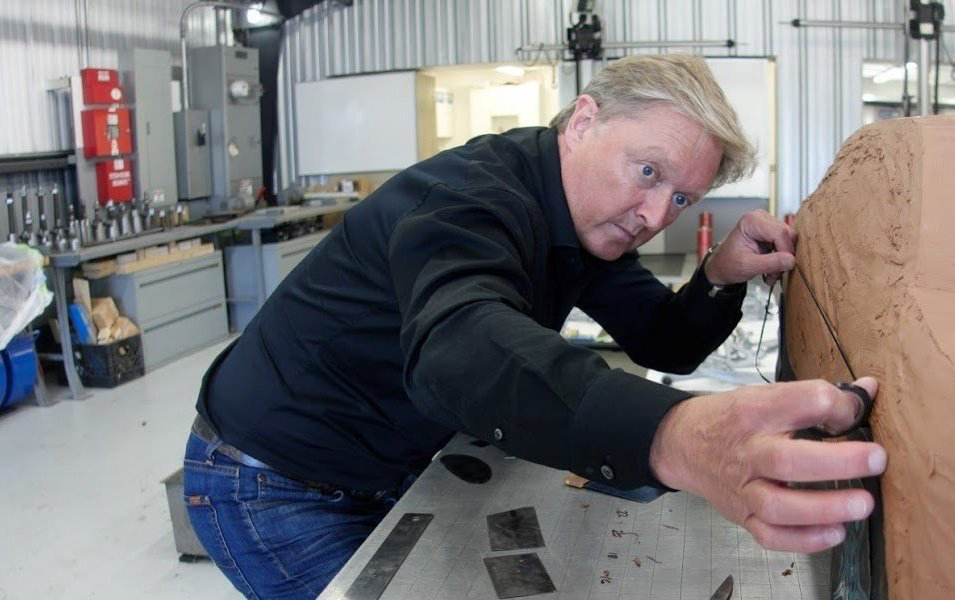LOS ANGELES, California — At this point, there isn’t much Henrik Fisker hasn’t done. The Danish automotive designer is the man behind the clean, muscular lines of the Fisker Karma, Aston Martin DB9, BMW Z8, and the VLF Rocket.
He recently rolled out his stunning EMotion concept, a modern reinterpretation of the sedan that was introduced at the Consumer Electronics Show (CES) in Las Vegas in January.
And there is his Orbit Shuttle Project, an autonomous connectable people mover designed for urban dwellers. Now Fisker is at the drawing table on his next big thing: a $40,000 all-electric vehicle.
It seems that there is nothing with wheels that Fisker can’t whittle into something sleeker, faster, and wildly contemporary.
“I want to take a little bit of risk when it comes to design,” he said opening up his Los Angeles garage for us to see his most recent concept the EMotion.

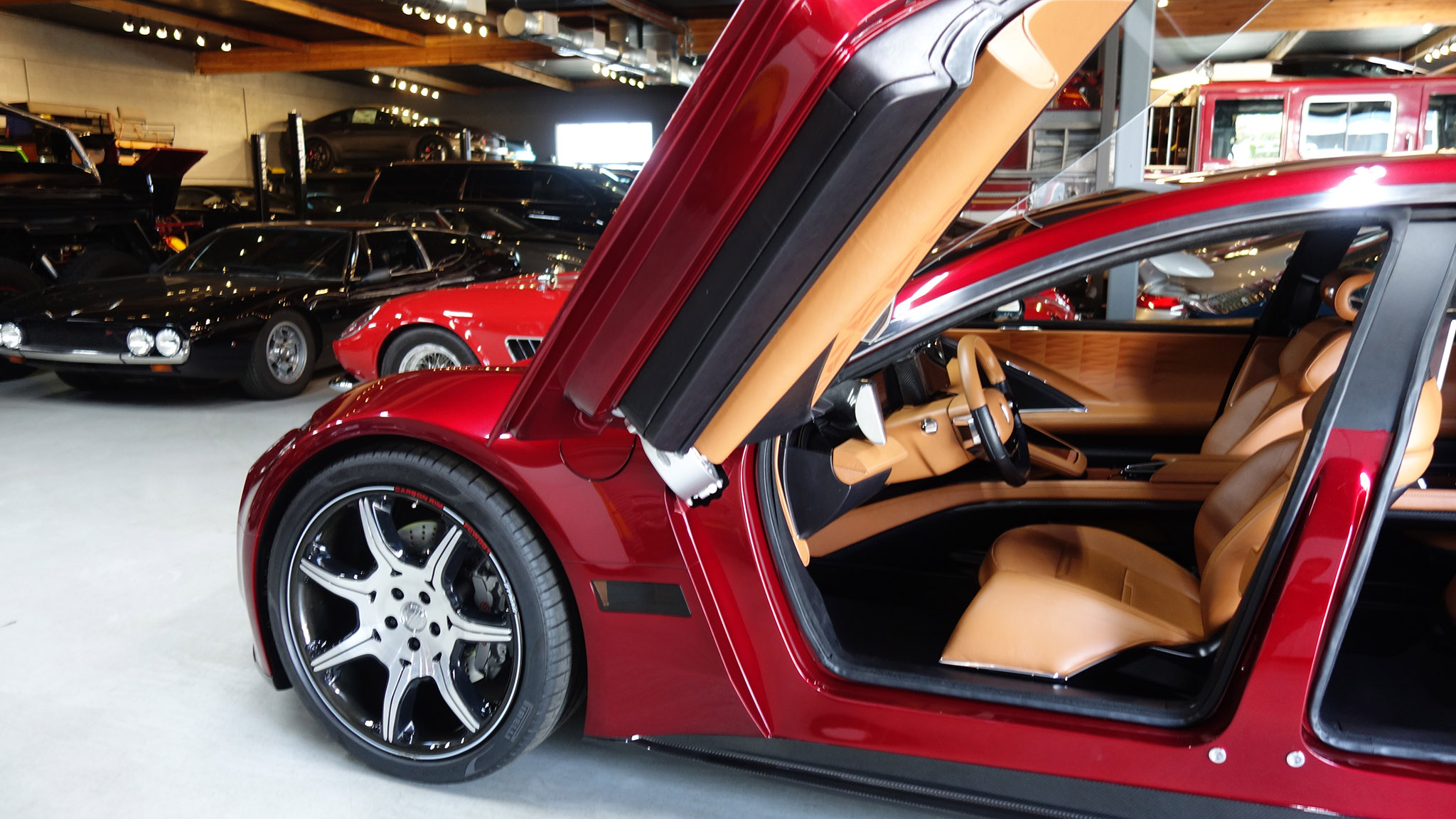
Take his more affordable yet unnamed EV, which we are fairly certain won’t be a sedan like the Tesla Model 3 or anything as humble-looking as a Chevrolet Bolt compact EV. Think out of the box for a moment—way out of the box.
“I want to make it really futuristic-looking,” he said, “but it has to be very versatile because we obviously want to get into a certain high volume with the vehicle.”
Fisker, at 55, retains a youthful charm—and a single-minded obsessiveness about design. He is excited to talk about his new project and so are we. He tells us about the new plan as we take a closer look at his futuristic EMotion concept in a Westside garage full of late model and vintage wheels.
Like the EMotion, his affordable mystery EV will have an estimated range of 400 miles on a single charge—employing a more efficient battery pack that will result in longer driving range. It will use its electric powertrain to its advantage in terms of interior space as he did with the new EMotion: no combustion engine means plenty more interior space to play around with.
“We have to be so radical that we take the people who’s maybe jumping ship from the big car makers,” he declared eagerly. “Plus, we also have to go in and see if we can get some people excited from, let’s say, Tesla, for instance, right?”


Fisker said he’s more or less signed off the design—well, “almost.” He hopes to manufacture several hundred thousand a year for the global market and plans to build them in the U.S.
“It’ll have a lot of very modern design details, but also a lot of new functional details,” he stated. “Because I feel once you go in for that $40,000 segment, you obviously are selling a vehicle to people, which will need more versatility because they not going to have multiple vehicles.”
Most folks who can afford to buy a $100,000 car likely have more than one. They have multiple options when the rest of us tend to have only one.
“In this case, it has to be one vehicle that can do a lot of stuff,” he continued. “And so I think versatility and usability is very important for us. And it’s kind of going to be a little bit of a first for me—I’ve been fortunate, or I’ve had a curse, of always having to make supercars or expensive luxury cars.”
We haven’t seen the new $40,000 EV, but the clues he dropped during our visit make it sound like it may be a crossover.


“It’s a great challenge because I want to bring together usability with beauty, in terms of design, but also usability in terms of good designed usability—and bringing all these things together is a great challenge,” he says. “And it’s something where I feel there is a huge opportunity to do something exciting in a segment that traditionally is very restrained because everybody’s afraid to step out of the ordinary, right?”
Fisker plans to present it by the end of next year—or possibly at CES the following January at the very latest.
“Everybody’s always doing show cars and amazing concepts in $100,000 plus, and that’s great,” he said. “But I think if you can really rethink what is the future of transportation with somebody who’s buying a $40,000 vehicle, I think that’s very exciting.
“It’s a challenge because you are going to hope that the average buyer is willing to take a bit of a risk in jumping on something that is maybe not so traditional. And so it’s going to be interesting to see how far we can push this and still get people with us.”


Speaking of risks, the EMotion is a calculated one that works really well. The interior is quite roomy and luxurious.
“Nobody has really yet taken the electric vehicles and really looked at the packaging of what could be done,” said Fisker as he snapped a photo of yours truly for Instagram. “I mean, there’s been some show cars, but with this one, it was really about trying to see, can we get the interior space of a BMW 7 Series or Mercedes S-Class?”
“But with much tighter proportions by moving the interior space, stretching that out but leaving the rest because we don’t have the engine [up front], we don’t have the gas tank at the rear, so it kind of let us do that.”
Fisker’s EMotion is one modern machine—with a splash of reflective red paint on a sculpted aluminum body, adaptive LED headlights that have give the design a feline quality, and dramatic butterfly doors. It rolls on massive 24-inch black carbon-fiber rims.

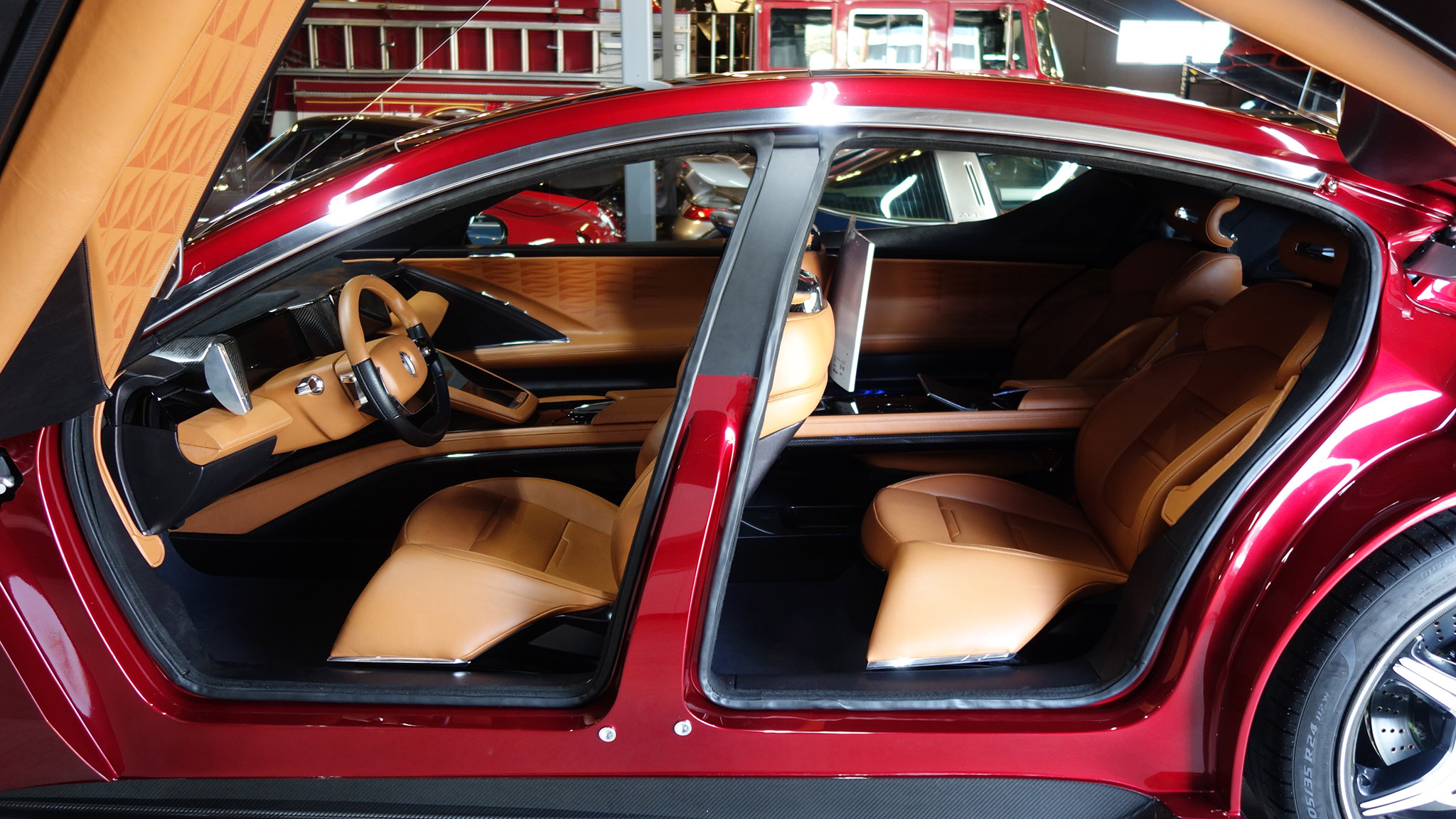
“So you can see there’s quite a lot of interior space,” he said. “We have about the same as a 7 Series and that was kind of the idea—so really to reimagine, what is the luxury car of the future?”
This sexy sedan certainly looks like its ready to pounce on its prey. Fisker opens the doors so I can take a seat in the EMotion. It fits like a glove. But the rear seats are where it’s at—with plenty of room to stretch out when the front passenger seat is moved all the way forward. A large video monitor occupies the back of the front seat.
The EMotion is expected to launch in 2020 for about $129,000—along with its a 575kw (780 hp) powerplant, solid-state batteries, a 0-60 mph time of 3 seconds, and a 160 mph top speed.
Certainly, Fisker’s innovating hasn’t come without obstacles. In 2014, Fisker Karma went bankrupt after his battery supplier went bankrupt and Chinese parts supplier Wanxiang bought out the company. They now fabricate an unaffiliated version of the Karma albeit under another name and it’s called the Revero.
“Of course, when they went bankrupt we were without a battery and we couldn’t continue,” said Fisker. It was truly “production hell.”

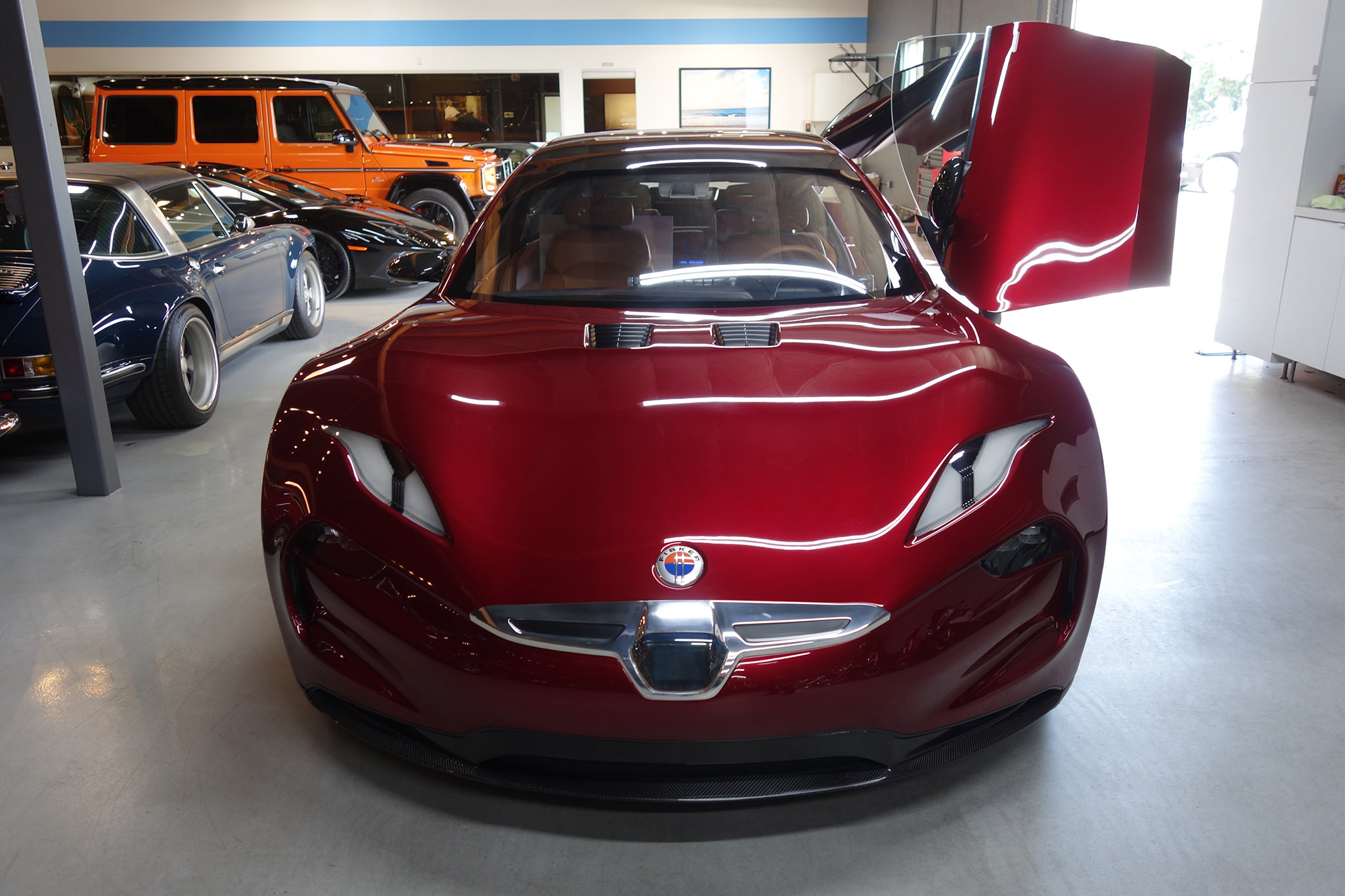
That bankruptcy did little to stop him. Today, Fisker is looking ahead and plans to launch the low-volume EMotion in about two years when its solid-state batteries are ready. More prototype testing is planned for the second half of next year.
“Right now, we’re obviously testing them in the lab and have pretty good results with them, but we have to set up a small pilot line, so we can get a little higher—we need more volume because right now, we build them by hand,” he said of the new battery.
Fisker Inc. holds patents on a solid-state battery that can produce 2.5 times the energy of traditional lithium-ion batteries that are currently in use. First Cobalt, a North American cobalt refinery that produces battery materials, recently named Fisker to its board of directors.
In the meantime, the Los Angeles-based Fisker is working with Hakim Unique Group of Hangzhou, China to create an autonomous, all-electric Fisker Orbit shuttle for airports, cities, campuses, and other geo-fenced routes.

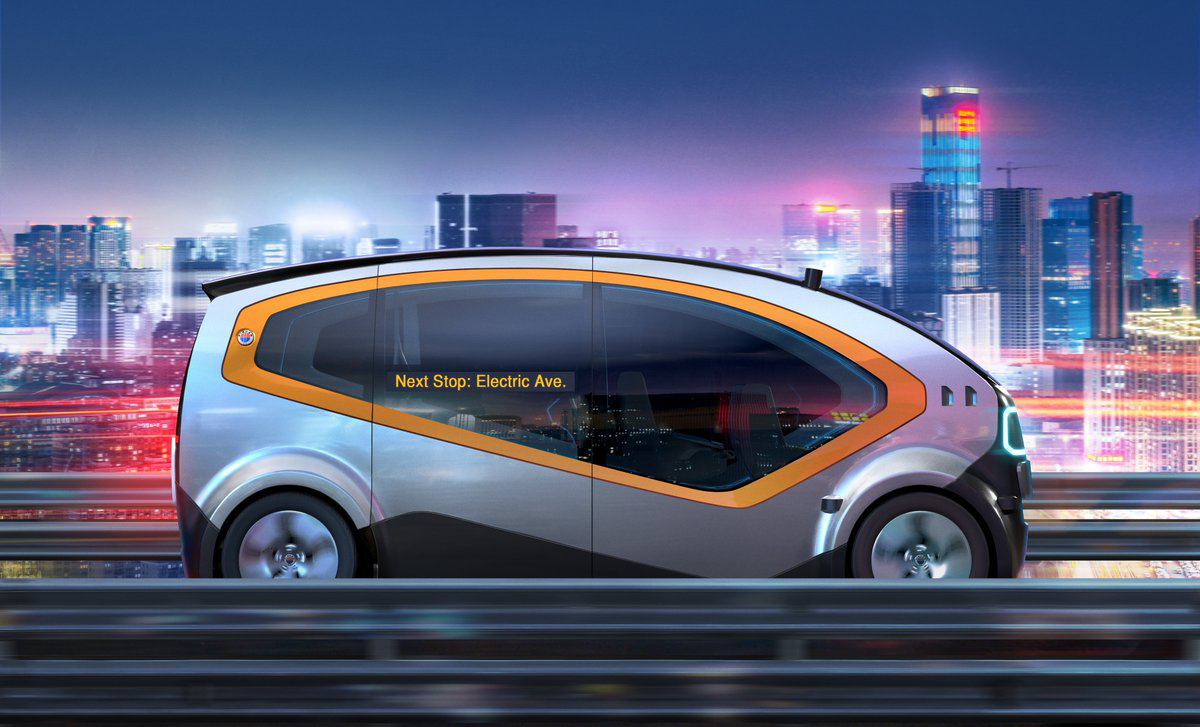
“I want to go beyond selling a private car to a consumer,” he said. “I think if you want to be interacting with your customer in the future, you need to be part of the customer’s journey beyond his or her private car. So the idea is you have a Fisker app. You take your vehicle. You drive it to the center of Los Angeles or maybe to a college campus, right? You then get out of your car, you park it, and now you have your Fisker app and he or she orders our Fisker Orbit shuttle. You get on that, and now its also part of your journey when you’re on that shuttle.”
The shuttles can hold between 8-12 people depending on its configuration and prototypes are expected to begin ferrying commuters by the end of this year.
“I wanted to make a shuttle that’s cool, that people actually want to get into,” he said.
And he wants to make these shuttles drive themselves.

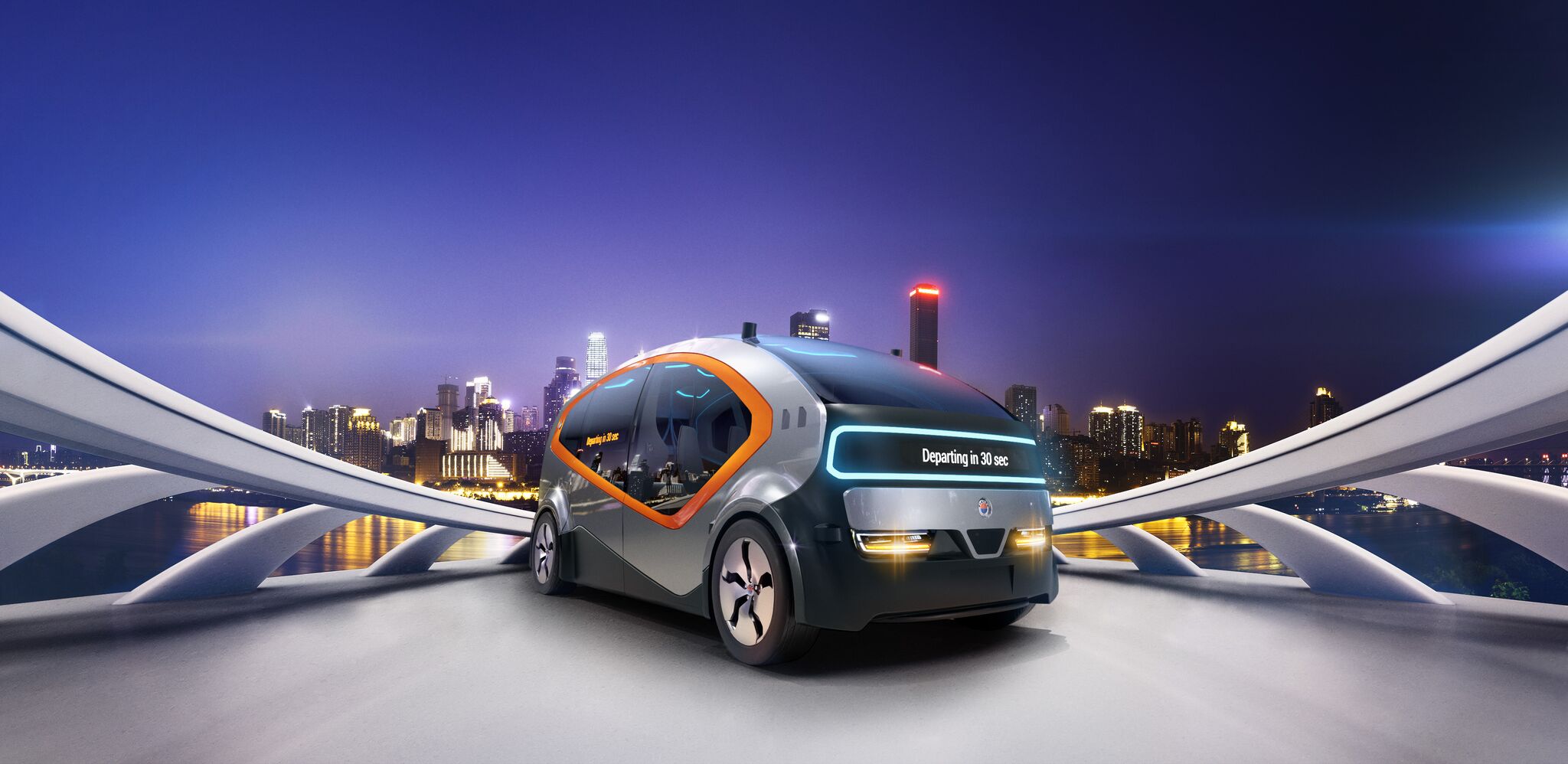
“I think the autonomy also for us—for me, autonomy is going to come in these shuttles before private cars.”
“Because we can operate them. We can decide when to drive them, when not to drive them, you know what I mean? It makes a lot more sense than private people with autonomous vehicles.”
A healthy combination of autonomous shuttles, futuristic sedans, and a $40,000 crossover sounds like a solid and well-balance plan.
With competition on the horizon from upstarts like Faraday Future, Lucid Motors, and more traditional marques like Mercedes-Benz—it should all make for an interesting race to Tomorrowland.

